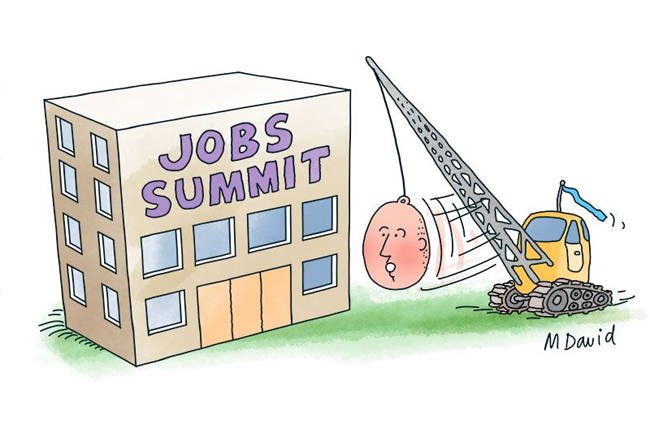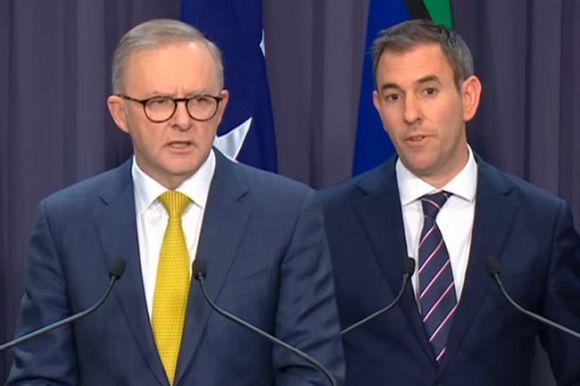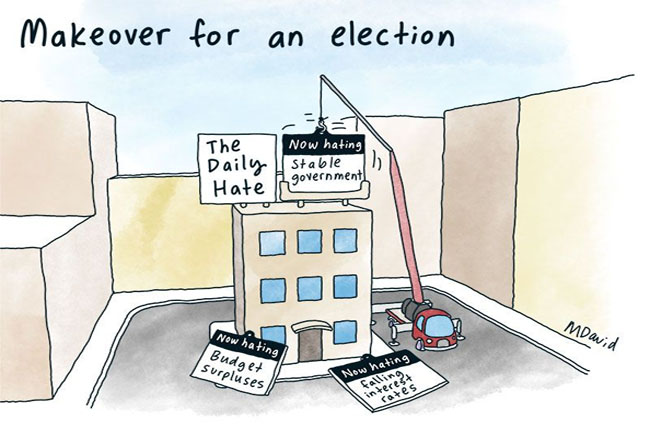The Albanese Government’s upcoming jobs talkfest provides a hopeful platform for necessary reform, as Alan Austin reports.
AUSTRALIA’S OFFICIAL jobless rate is now 3.38%, the lowest in nearly 50 years. But all is not well. More than 1.3 million Australians still can’t get enough work to live on, and 474,000 of these can’t find any jobs at all. Job vacancies in May (latest data) were at an all-time high of 480,100 and real wages are still declining.
But help may be on the way in the form of next month’s Jobs and Skills Summit in Canberra.
Real mess masked by dodgy statistics
Australia’s employment situation looks much better than it is because those counted as employed include more than 721,000 working ten hours or less per week and around a million at any given moment working zero hours per week.
The current jobless numbers do not count the many thousands off work on sickness benefits, nor the “workers” who used to do nothing on the dole who are now doing nothing on the public service payroll.
The Australian Bureau of Statistics (ABS) shows hours actually worked in all jobs per employee each month (File 6291, table 09). Through the 1990s, when this series began, this was above 34 per month. This slipped below 33.5 towards the end of the Howard years, reaching just 32.6 in 2007.
This fluctuated between 32 and 33 through the Labor years – 2008 to 2013 – and the Abbott and Turnbull periods. It then fell below 32 under the hapless Treasurer Josh Frydenberg and has averaged just 30.5 for the first six months of 2022.
Migrants with required skills
One of the most costly policy failures of the previous Coalition Government was failing to maintain the inflow of qualified migrants. Slashing these numbers has been a major contributor to Australia’s overall economic demise since 2014.
The ever-diminishing availability of qualified technical staff has impacted innovation, scientific and medical research, manufacturing output and the ability of many enterprises to function efficiently. These have ultimately resulted in weaker economic growth, lower productivity, stagnant wages, reduced company profits in some sectors and deeper government debt. See grey graph, below.

The Government should increase the migrant intake without delay. But it must avoid wage suppression which could be caused by a large influx of poor people happy to work for anything. The mechanism to prevent this, the Temporary Skilled Migration Income Threshold (TSMIT), is now too low at $53,900. Raising this to $70,000 will ensure migrants move into positions Australians genuinely cannot fill, and do not serve to undercut wages.
Productivity
Historically, this measure – gross domestic product generated per hour worked – has risen in fits and starts, with impressive surges during the governments of Paul Keating, John Howard and Julia Gillard.
Of all governments since records began in the Hawke years, the recent Coalition Government achieved the worst average annual productivity increase, with a puny average rise of 1.08 index points per year between its election in 2013 and the end of 2021.
This has been a grievous Coalition failure given booming productivity worldwide since the end of the Global Financial Crisis in 2013. Over the period when productivity increased a miserable 8.9 points under the Coalition, it rose 23.1 points in Poland, 25.9 points in Thailand, 30.1 points in Taiwan and 43.4 points in Ireland.
Bloated public service
Prime Minister Anthony Albanese’s is the first incoming government in decades not to have promised to cut the deficit by slashing public service jobs.
On taking office in 1996, the Howard Government axed many federal programs and sacked 25,000 public servants. Kevin Rudd in 2007 was attacked for “wielding a blunt axe” when his razor gang trimmed the public service substantially.
Seeing it has worked pretty well before, it was a surprise that this was not a campaign issue in the May Election.
This is particularly surprising because more than at any time in modern history, there is a strong case that this is warranted.
For some inexplicable reason, in calendar 2018, Australia’s state and federal governments took on 202,300 extra full-time public servants, which was 2.3% of all full-time workers. That brought the public service to an unprecedented 16.1% of all full-time workers. See yellow chart, below.

There is no apparent reason for this sudden jump in 2018. There was no pandemic and no significant economic boom. In fact, Australia went into per capita recession that year.
One plausible explanation is that the Coalition under newly-elected leader Scott Morrison, in collaboration with the conniving media, was looking for sneaky ways to make economic indicators look better than they were.
So should the Albanese Government decide to cut the public service in order to reduce the deficit and debt, they have an argument.
Workers without leave entitlements
One adverse consequence of the recent casualisation of Australia’s workforce is that many workers do not get paid holidays and sick leave, leaving them much less financially and emotionally secure.
In May this year, the ABS reported that 2,635,300 workers had no holiday, long service or sick leave entitlements provided by their employer. This comprised 900,800 full-time workers and 1,734,500 casual and part-timers.
The percentage of workers without leave has now been above 22% for the last eight quarters and above 23% for four of those. This is appalling.
The Jobs and Skills Summit
The Jobs and Skills Summit will be held in Canberra on 1-2 September. Its objectives include keeping unemployment low, boosting productivity, growing wages, improving migration settings and ensuring men and women are treated equally.
Contributions to deliberations are not limited to those attending the summit. Treasurer Jim Chalmers has invited all Australians to make submissions.
Let’s make sure this succeeds.
Alan Austin is an Independent Australia columnist and freelance journalist. You can follow him on Twitter @alanaustin001.
 This work is licensed under a Creative Commons Attribution-NonCommercial-NoDerivs 3.0 Australia License
This work is licensed under a Creative Commons Attribution-NonCommercial-NoDerivs 3.0 Australia License
Support independent journalism Subscribe to IA.















